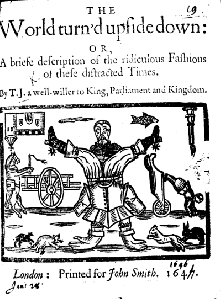 |
| Resistance art on the wall -- Aida refugee camp, Palestine |
So much occurred during my two weeks in Palestine that I am reluctant to single out one moment.
However, I keep thinking back to a discussion with representatives of the Palestinian Liberation Organization (PLO). They were briefing us on the current strategy of "internationalizing" the question of the status of Palestine, i.e. their sense that the time has come to stop relying on the U.S. to dictate the pace of peacemaking, and instead move towards full Palestinian membership in the United Nations and the ICC.
The conversation turned to the role of the churches -- particularly U.S. churches -- in working for peace and justice in Palestine.
I said that I wondered what would happen if churches were encouraged to talk about Palestine less in the context of "Holy Land" and more in the context of "anti-racism." In particular, I mentioned that
 |
| Michelle Alexander, The New Jim Crow – Mass Incarceration in the Age of Colorblindness |
(2) Churches are now front and center in the struggle for justice for immigrant people in the US, and for a radical re-thinking of the relationship between the US and the other nations of the Americas. (See, for instance, this account of an event held just a few days ago, on Palm Sunday, to advocate for better treatment of the service workers in our community, who are frequently immigrants: "We Who Are Many Are One: From the Lord's Table to Every Table" )
 |
| Palm Sunday 2015 in Chicago: "We Who Are Many Are One: From the Lord's Table to Every Table" |
Of course, it helped that on Palm Sunday our congregation joined others to to advocate for better treatment of the service workers in our community, who are frequently immigrants. See: "We Who Are Many Are One: From the Lord's Table to Every Table" This was a joyous reminder of the priorities we choose.
Palm Sunday wouldn't have been the same for me without an epiphany about our connectedness to people throughout North and South America. A (virtual) friend of mine in Mexico City urged me a few months ago to learn more about the Ayotzinapa 43 and to tell others. It led me to think much more deeply about the ways our behavior in the US affects people in communities throughout the hemisphere. (See Ayotzinapa43: US People Need an Attitude Adjustment )
And then I thought back to a blog post I wrote about a year ago: When is Christianity Going Back to Being the Religion of "UN-entombment"? . "Oh yeah," I said to myself, "the PLO is not the only radical liberation organization around here . . . In fact, they've got nothing on the Christian Church (at least if the Christian Church is really being true to itself)!"
 |
| "Now that I've seen it I'm responsible for it." Reproduction of West Bank wall art by Metro Chicago Synod Working Group on the Middle East for Good Friday, 2014. |
Is this related to "liberation theology"? Perhaps . . . but I wonder if "liberation theology" isn't colored by a kind of romanticism that allows it to be treated as something that is appropriate to somewhere else -- a resort of desperate people in Central America, perhaps -- but not really the day-to-day stuff of people in ordinary US cities like Chicago.
Churches in ordinary US cities like Chicago are waking up to the fact that, in order to actually live, they may need to be more like community organizations and less like traditional, closed-on-themselves, denominationally-doctrinaire congregations. And that the justice issues are very close at hand -- they don't require a mission trip to a foreign country in order to engage them.
So: "Christian Liberation Organization." It's worth trying on for size.
Related posts
Here are links to my posts during my visit to Palestine:
“The churches provide the software” (and a related post written immediately on my return: ISRAEL/PALESTINE: Apartheid is to Pluralism as Desktop Computing is to the Internet )
The Gospel According to Angie
Needed: Abrahamic Conversation
What Might a Blossom Signify?
Endgame: Overlord, Middle Ground, Underclass
Take to me to the river . . . .
Efrat and the Dream Grocery Store
The Land of Milk and Honey and The Garden State
Other related posts
 I believe that once the Church comes out of the closet -- that is, once we
start speaking quite openly about the difference between the world as
we find it and the world as we believe God wishes it to be -- there is
no way this old world will be able to stay the same.
I believe that once the Church comes out of the closet -- that is, once we
start speaking quite openly about the difference between the world as
we find it and the world as we believe God wishes it to be -- there is
no way this old world will be able to stay the same.(See Let the Church Out of the Closet )
 "Missa dos Quilombos"
asked for forgiveness and sought healing for the legacy of slavery in
Brazil. Dom Helder celebrated the Quilombo Mass. He said: "Mariama
[Mother
Mary], we aren't here to ask that today's slaves be tomorrow's slave
masters. Enough of slaves! Enough of masters! We want liberty!" The
beating of the drums was overpowering, they exploded like the screams of
our souls!
"Missa dos Quilombos"
asked for forgiveness and sought healing for the legacy of slavery in
Brazil. Dom Helder celebrated the Quilombo Mass. He said: "Mariama
[Mother
Mary], we aren't here to ask that today's slaves be tomorrow's slave
masters. Enough of slaves! Enough of masters! We want liberty!" The
beating of the drums was overpowering, they exploded like the screams of
our souls!(See Hélder Câmara and Liberation Theology 101: Where? When? Why? Who? )



























